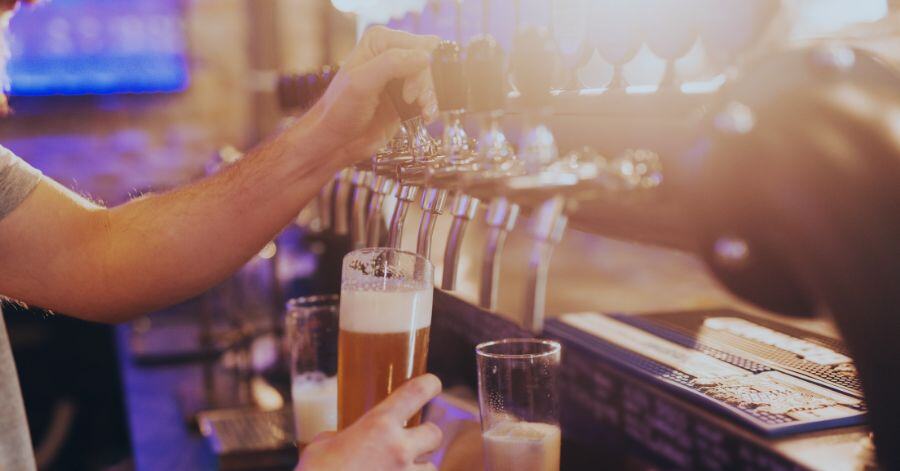Okay, let's talk about draft beer. It's a big deal, right? It's often a cornerstone of your bar's sales and profits, but it can also be a real headache if you don't keep a tight grip on it.
That’s why it’s critical to have visibility and control of your draft beer inventory. Managing draft beer inventory, however, can be complex due to factors like keg size, pour consistency, and product freshness. All these things, when managed incorrectly, can significantly impact your business’s bottom line.
But it doesn’t have to be that way. By implementing effective draft beer inventory control strategies, you can optimize your operations, reduce waste, and increase profitability.
In this blog, we’ll dive into five key steps needed to successfully manage your draft beer inventory.
What is Draft Beer Inventory Control?
Draft beer inventory isn't just about counting kegs. It's about knowing what's in those kegs, when it's going to run out, and how much you're really making on each pint. It's about preventing waste, keeping your customers happy, and, let’s face it, making more money.
Effective draft beer inventory control is crucial for several reasons:
- Profitability: By minimizing waste, optimizing your beer selection, and preventing theft, you can significantly increase your bar's profitability.
- Customer Satisfaction: Ensuring a consistent supply of fresh beer enhances customer satisfaction and loyalty.
- Operational Efficiency: Accurate inventory data helps streamline operations, reduce labour costs, and improve overall efficiency.
- Data-Driven Decisions: Comprehensive draft beer data allows you to make informed decisions about product selection, pricing, and promotions.
1 - Choose How You’ll Perform Inventory on Your Beer Kegs
There are several methods for tracking draft beer inventory:
- Keg Scale: Using a keg scale provides a more accurate measurement of the remaining beer. However, it requires additional equipment and manual intervention.
- Keg Check: This popular tool uses a torque wrench that is specifically designed to measure the amount of beer left in a keg. While useful for larger kegs, it usually isn’t the most effective method for smaller kegs.
For more information, check out our blog… Why Weighing is the Most Efficient and Accurate Bar Inventory Method.
2 - Implement Keg Flow Monitoring
Keg flow monitors - such as BarTrack and Bevchek - are like having a detective on your bar. They watch every drop that goes out so that you know exactly how much beer is left in your keg. This helps you spot problems like leaks, overpouring, and even employee theft.
3 - Use a Bar Inventory Management System
Most importantly, it's important that you track your inventory data and sync it up with your point-of-sale (POS) system. An inventory management system is your new best friend. It keeps track of everything, from what you've got to what you need to order. Look for one that can:
- Set Reorder Points: Avoid running out of your best sellers by setting reorder points based on your ideal PAR Levels.
- Create Automatic Orders: Less paperwork, more time for pouring drinks and making profits.
- Analyze Sales Data: See what's selling and adjust your offerings accordingly.
- Integrate With Your POS System: Streamline your operations and get a complete picture of your business, and how you are performing.
4 - Figure Out the Shelf Life of Your Untapped and Tapped Kegs
Beer is a living thing. It has a best-before date. Pasteurized tapped beer kegs typically last around 90-120 days, while unpasteurized tapped beer kegs last around 5-8 weeks. To help ensure you don’t waste inventory, it’s important to rotate your kegs to make sure the oldest stuff gets poured first. This follows the First In, First Out (FIFO) inventory methodology of managing your stock.
5 - Use Your Inventory Data to Increase Profit Margins
Your inventory data is a goldmine. Use it to figure out what's selling, what's not, and how much you're making on each pour. This information can help you:
- Optimize your menu
- Adjust your prices
- Identify slow-moving items
- Prevent overstocking
- And so much more!
How Sculpture Hospitality Can Help You Achieve Draft Beer Inventory Control
We get it. Managing draft beer isn’t sexy. It can be frustrating and boring, and it’s not why you got into the industry… but boy is it important.
That's why, here at Sculpture Hospitality, we provide tools to make your life easier. Our inventory management systems and our preferred keg flow monitors give you the data you need to make smart decisions.
So there you have it. By following these steps and leveraging the right tools, you can master your draft beer inventory and pour profits into your business. Cheers to that!
Not sure where to start? Get in touch with a Sculpture Hospitality inventory expert today. We’d love to help show you how we can make your bar more efficient and profitable.






.png)




